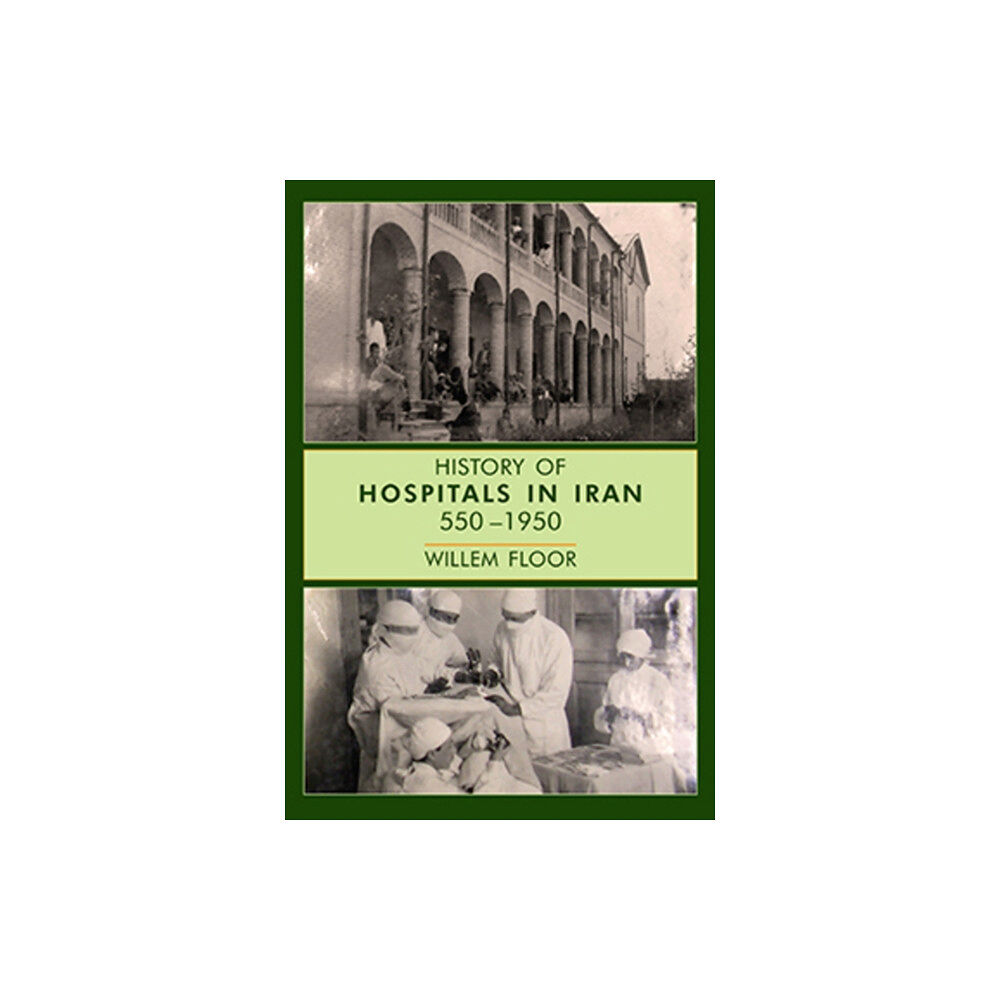- Hem
- Böcker
- Kurslitteratur
- Historia
- History of Hospitals in Iran, 5501950 (inbunden, eng)

History of Hospitals in Iran, 5501950 (inbunden, eng)
Aplace for the sick (bimarestan) had existed in Iran since the mid-sixth century, but such institutions never developed into real hospitals,...
1 009 kr
1 055 kr
Slut i lager
- Fri frakt
Fri frakt över 299:-
Snabb leverans
Alltid låga priser
Produktbeskrivning
Aplace for the sick (bimarestan) had existed in Iran since the mid-sixth century, but such institutions never developed into real hospitals, except for a few instances during the tenth and eleventh centuries. Thereafter, until the twentieth century, their number was small and declining, and merely served as alms houses (dar al-shafa) for sick and poor pilgrims, which was why they were attached to mosques and religious schools (madrasehs).
There was no major change in this situation until the mid-1880s. It was then that changes began to occur through the establishment of dispensaries, and later, hospitals. Four main groups were involved: the government of Iran, the government of (British) India and its affiliates, and American and British missionary organizations.
Each had their own disparate policy objectives. Although the first Iranian government hospitals preceded the ones established by American and British missionaries, the services they offered were limited. They did not include surgery, which was the comparative advantage of the foreign hospitals.
In addition, the latter offered better trained physicians, nurses, modern medical methods of treatment, and the use of medical instruments and devices. As a result, these Western hospitals had an important impact on the training of Iranian physicians and nurses. They also introduced modern methods of medical treatment, surgery techniques and medicines.
Furthermore, they made it more acceptable for Iranian patients to seek treatment in a hospital, an institution not traditionally viewed as a place to heal but rather as a place to die. Despite their increasing role in providing medical care, the urban-based hospitals were too few in number, and not geared to address Irans public health issues.
In particular, they could not meet the medical needs of the countrys mainly rural population. Nevertheless, the hard work and sacrifice of the staff of these modern hospitals laid the groundwork for Irans much needed and comprehensive public health infrastructure and health policies.
These were further developed in the 1930s and grew in speed and size during the 1950s. This book, together with Willem Floors companion volume, The Beginnings of Modern Medicine in Iran, are essential histories for anyone interested in the inceptions of Irans modern health care system.
There was no major change in this situation until the mid-1880s. It was then that changes began to occur through the establishment of dispensaries, and later, hospitals. Four main groups were involved: the government of Iran, the government of (British) India and its affiliates, and American and British missionary organizations.
Each had their own disparate policy objectives. Although the first Iranian government hospitals preceded the ones established by American and British missionaries, the services they offered were limited. They did not include surgery, which was the comparative advantage of the foreign hospitals.
In addition, the latter offered better trained physicians, nurses, modern medical methods of treatment, and the use of medical instruments and devices. As a result, these Western hospitals had an important impact on the training of Iranian physicians and nurses. They also introduced modern methods of medical treatment, surgery techniques and medicines.
Furthermore, they made it more acceptable for Iranian patients to seek treatment in a hospital, an institution not traditionally viewed as a place to heal but rather as a place to die. Despite their increasing role in providing medical care, the urban-based hospitals were too few in number, and not geared to address Irans public health issues.
In particular, they could not meet the medical needs of the countrys mainly rural population. Nevertheless, the hard work and sacrifice of the staff of these modern hospitals laid the groundwork for Irans much needed and comprehensive public health infrastructure and health policies.
These were further developed in the 1930s and grew in speed and size during the 1950s. This book, together with Willem Floors companion volume, The Beginnings of Modern Medicine in Iran, are essential histories for anyone interested in the inceptions of Irans modern health care system.
| Format | Inbunden |
| Omfång | 564 sidor |
| Språk | Engelska |
| Förlag | Mage Publishers |
| Utgivningsdatum | 2020-12-14 |
| ISBN | 9781949445244 |
Specifikation
Böcker
- Inbunden, 564, Engelska, Mage Publishers, 2020-12-14, 9781949445244
Leverans
Vi erbjuder flera smidiga leveransalternativ beroende på ditt postnummer, såsom Budbee Box, Early Bird, Instabox och DB Schenker. Vid köp över 299 kr är leveransen kostnadsfri, annars tillkommer en fraktavgift från 29 kr. Välj det alternativ som passar dig bäst för en bekväm leverans.
Betalning
Du kan betala tryggt och enkelt via Avarda med flera alternativ: Swish för snabb betalning, kortbetalning med VISA eller MasterCard, faktura med 30 dagars betalningstid, eller konto för flexibel delbetalning.
Specifikation
Böcker
- Format Inbunden
- Antal sidor 564
- Språk Engelska
- Förlag Mage Publishers
- Utgivningsdatum 2020-12-14
- ISBN 9781949445244
